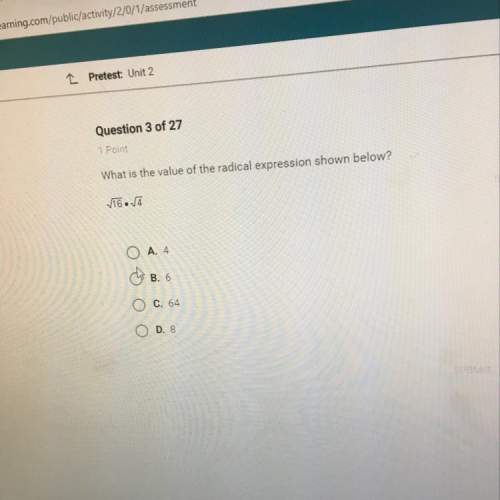
Mathematics, 22.04.2020 02:09 robertjoy19
The National Institute of Standards and Technology (NIST) offers Standard Reference Materials to aid in the calibration of measurement instruments and verify the accuracy of measurements. Suppose a medical researcher wants to verify that the distances he measures with his computed tomography machine are not too large, so he orders a Dimensional Standard for Medical Computed Tomography from NIST. This standard consists of 18 plastic balls held in place by a plastic support structure. The certified distance between the balls numbered 1 and 2 is 15.96 mm, and NIST determines that measurement errors are normally distributed with a standard deviation of 0.05 mm. Upon receiving the Standard Reference Material, the researcher measured the distance between balls 1 and 2 five times. Take these five measurements to be a simple random sample of all measurements made on this device under carefully controlled conditions. The researcher then calculated the summary statistics, where is the mean distance between balls 1 and 2, as measured by his computed tomography machine. Test of =15.96 vs >15.96The assumed standard deviation=0.05Samplesize Samplemean Standarderror x⎯⎯⎯ SE5 16.02 0.02236(1). Complete the analysis by calculating the value of the one-sample z-statistic, the p-value, and making the decision. First, calculate z to at least two decimal places. z=(2).Use software or a table of standard normal critical values to determine the p‑value. Give your answer precise to at least four decimal places. p=(3). Should the researcher reject his null hypothesis if his significance level is =0.05?A. Yes, there is enough evidence (p<0.05) that the mean distance between balls 1 and 2, as measured by his computed tomography machine, is greater than 16.02 mm. B. No, there is not enough evidence (p>0.05) that the mean distance between balls 1 and 2, as measured by his computed tomography machine, is greater than 16.02 mm. C. No, there is not enough evidence (p<0.05) that the mean distance between balls 1 and 2, as measured by his computed tomography machine, is greater than 16.02 mm. D. Yes, there is enough evidence (p>0.05) that the mean distance between balls 1 and 2, as measured by his computed tomography machine, is greater than 16.02 mm.

Answers: 3


Other questions on the subject: Mathematics

Mathematics, 21.06.2019 18:00, brooke0713
Galen sold tickets of his church’s carnival for a total of $2,820. children’s tickets cost $3 each and adult tickets cost $5 each. the number of children’s tickets sold was 30 more than 3 times the number of adult tickets slod. how many children’s ticket and how many adult tickets did he sell?
Answers: 2

Mathematics, 21.06.2019 18:30, angelina6836
Anormally distributed data set has a mean of 176.3 and a standard deviation of 4.2. what is the approximate z-score for the data value of 167.9? 2.00 −2.00 8.4 −8.4
Answers: 2

Mathematics, 21.06.2019 22:00, elondamason
Which of these triangle pairs can be mapped to each other using a single translation? cof hn
Answers: 2

Mathematics, 21.06.2019 23:30, jdenty3398
The graph of the the function f(x) is given below. find [tex]\lim_{x \to 0\zero} f(x)[/tex] [tex]\lim_{x \to 1+\oneplus} f(x)[/tex] [tex]\lim_{x \to 0-\zeroneg} f(x)[/tex]
Answers: 1
You know the right answer?
The National Institute of Standards and Technology (NIST) offers Standard Reference Materials to aid...
Questions in other subjects:

Mathematics, 26.08.2021 23:10


Social Studies, 26.08.2021 23:10

Mathematics, 26.08.2021 23:10



Mathematics, 26.08.2021 23:20


Mathematics, 26.08.2021 23:20




